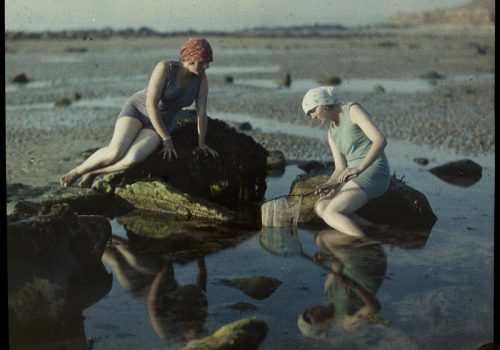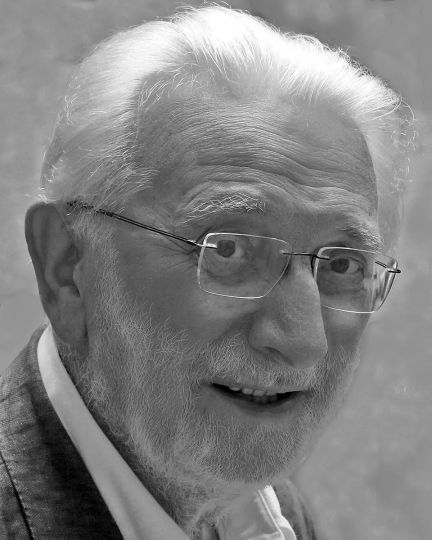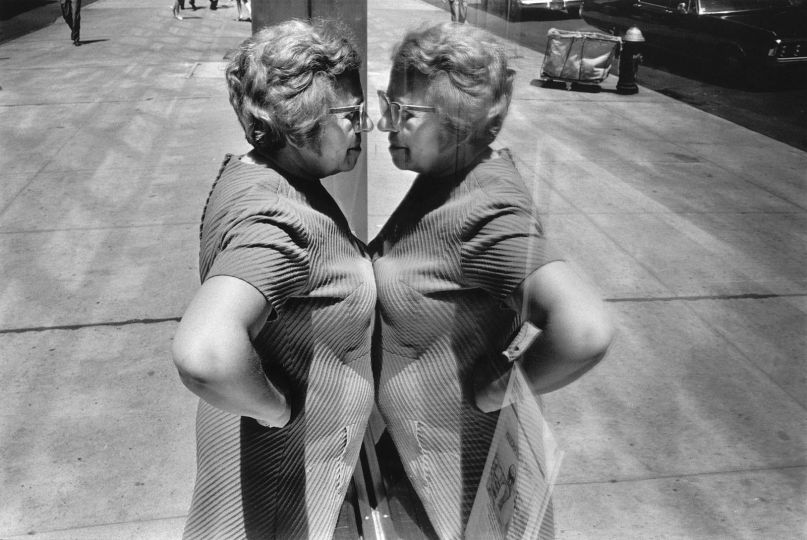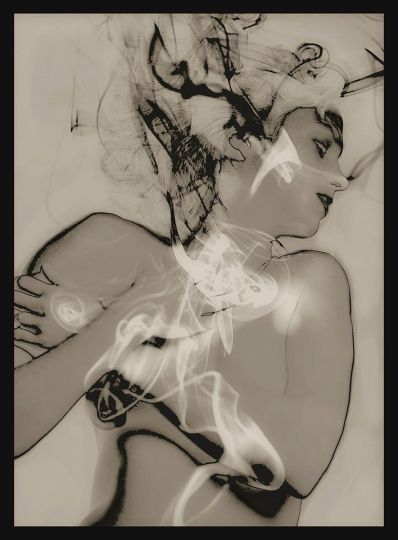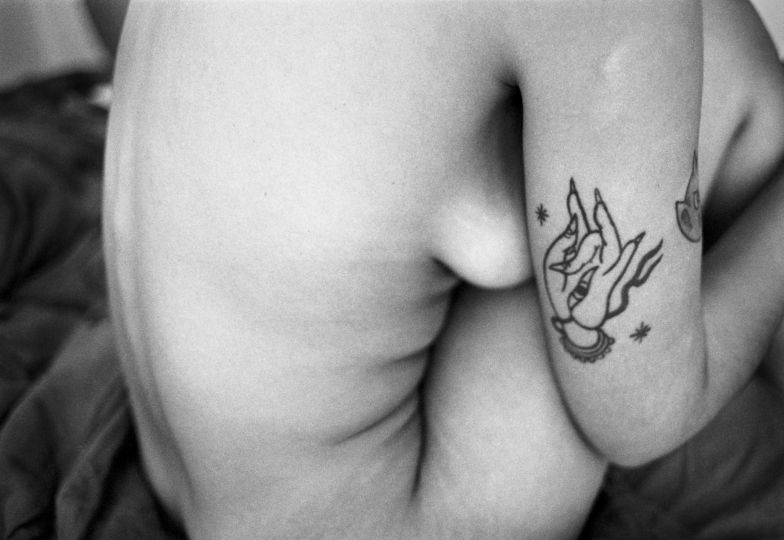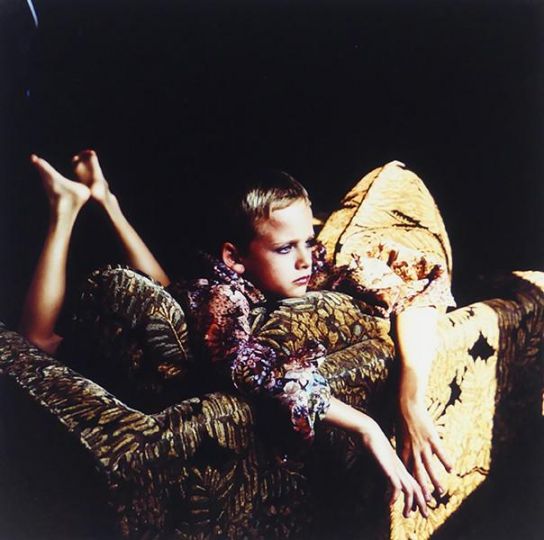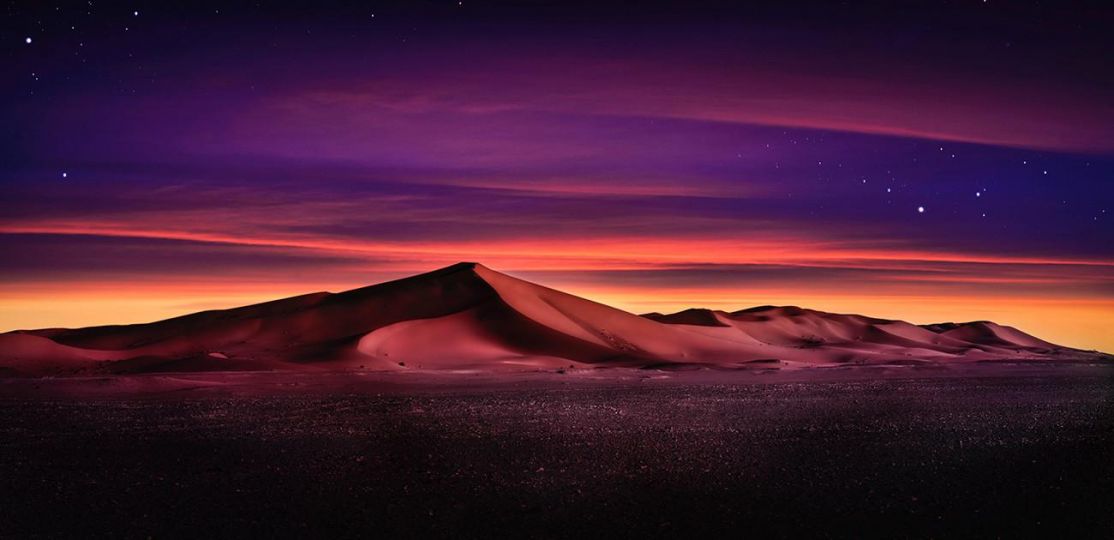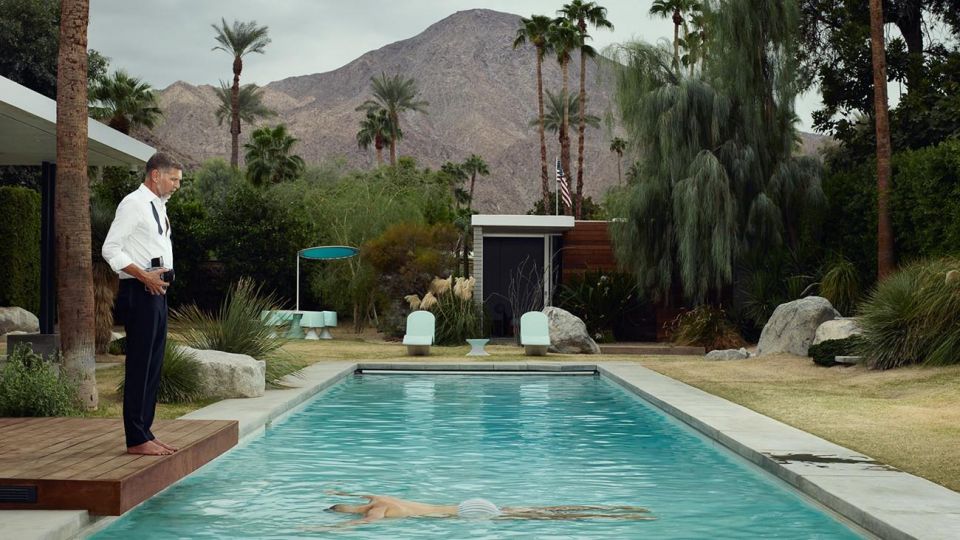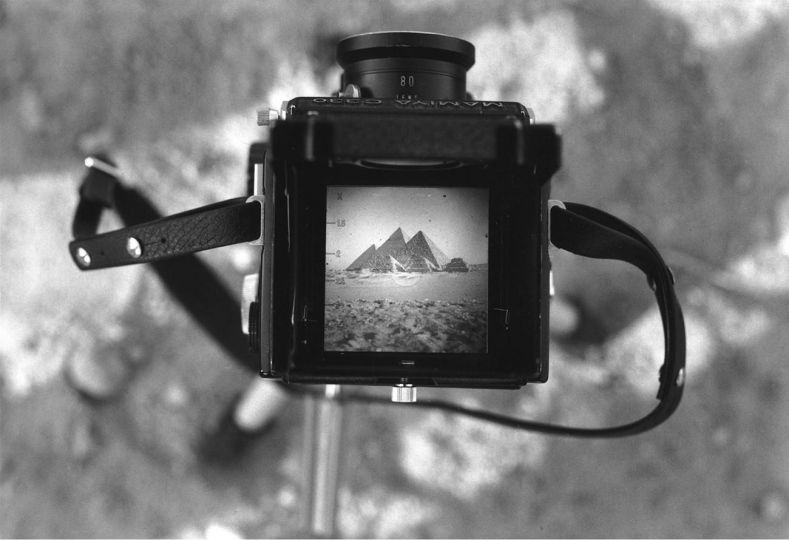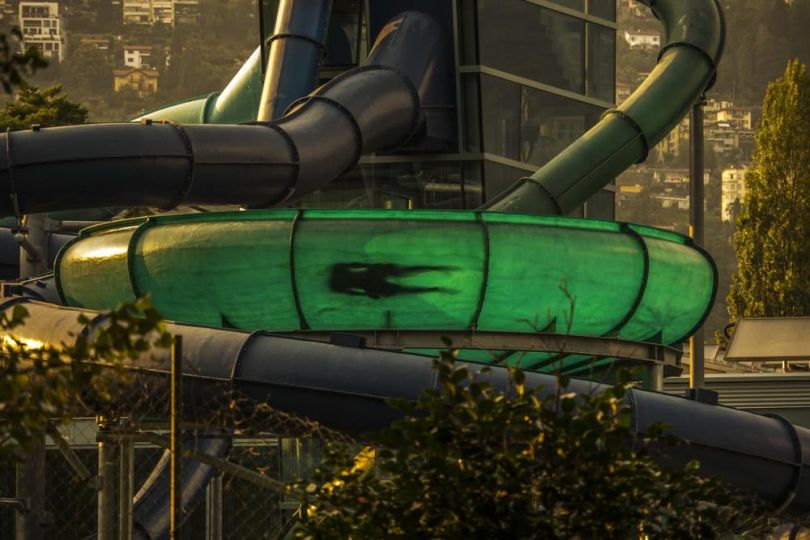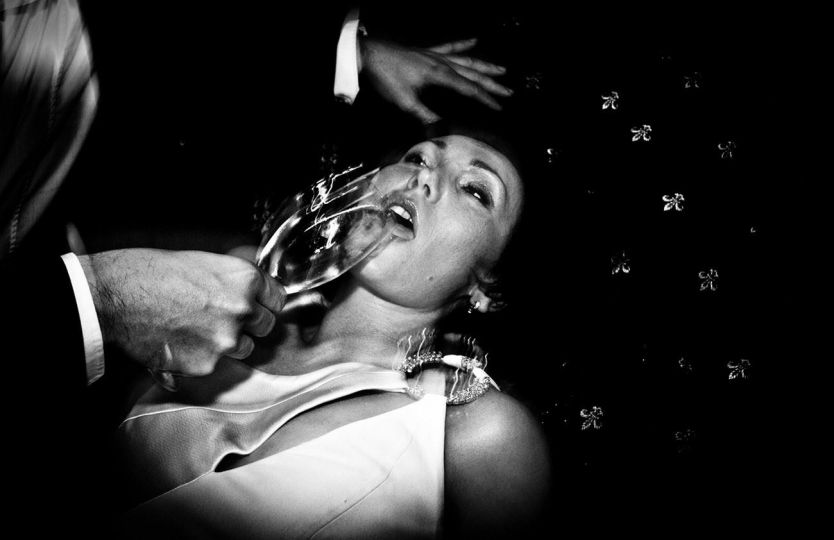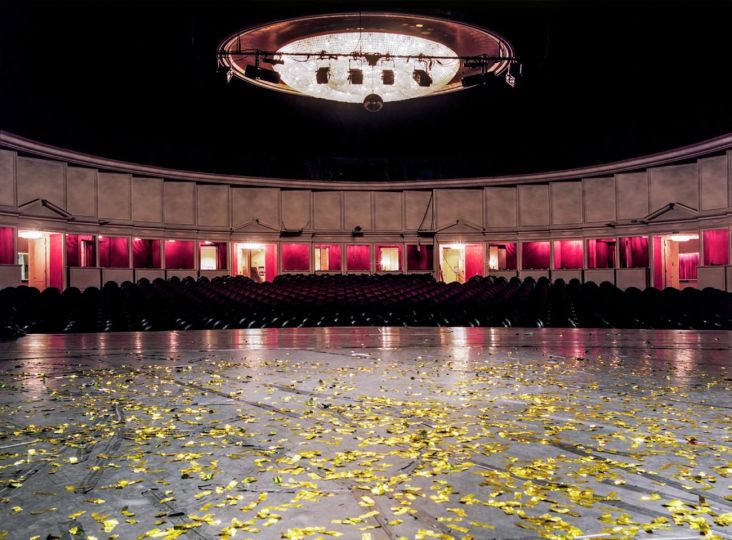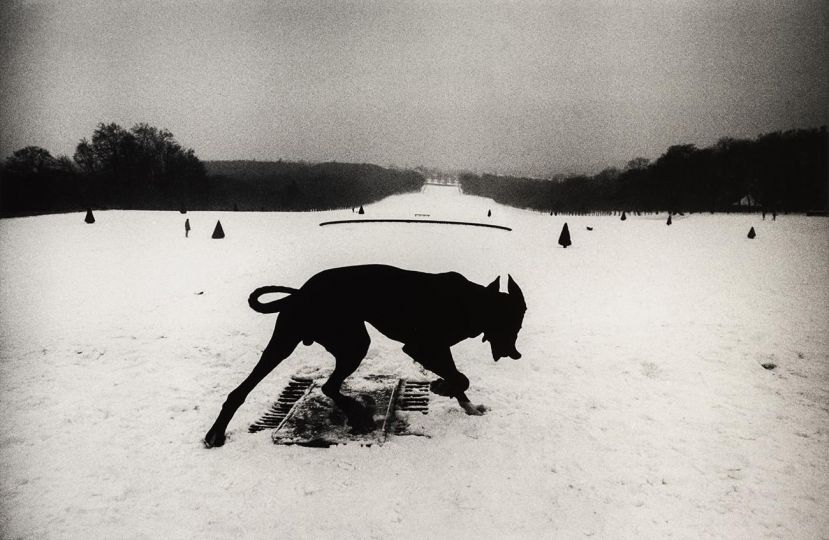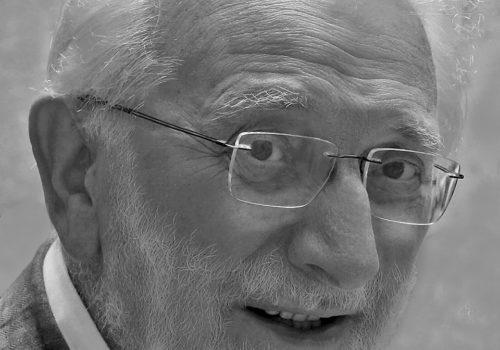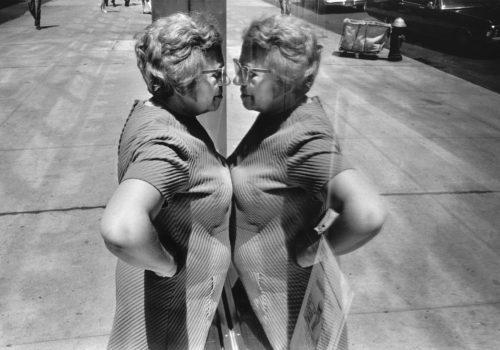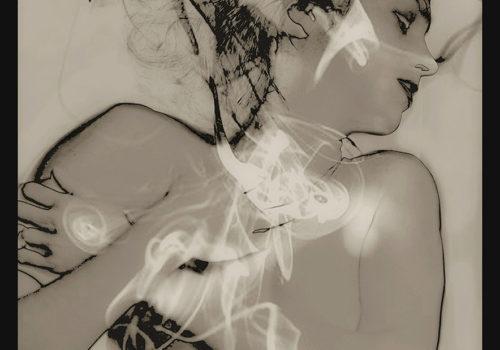Photography has made itself at home in Agon-Coutainville, a small commune of three thousand inhabitants in the Cotentin Peninsula. At the initiative of Emmanuelle Polle, the new Councilor responsible for culture, each year large format photographic prints are exhibited in public spaces. “One of the themes of the campaign was turning our nearly three-kilometer-long seawall promenade into an open-air gallery,” she noted. While the concept itself may not be new, the proximity of the sea, the idea of a stroll in fresh air, rain or shine, and the size and the quality of the custom-made brushed steel frames give each photo rare attention.
Autochromes in the open air
Launched last summer with the photographs of the architect and designer Marc Held, taken while he was a gym instructor on this beach in the 1950s, the principle of outdoors exhibition is again at work this year with a “bath of color.” “We didn’t want to limit ourselves to black and white or to local history. We went in a whole new direction, with color photographs that have no relationship to the commune,” explained Emmanuelle Polle.
It was by rummaging through the online Archives de la Manche that they stumbled across Gustave Gain, a Norman photographer born in Cherbourg. Nearly five hundred of Gustave Gain’s autochromes have been preserved. They include landscapes, sunsets, travel photos, as well as a lot of family portraits in which his wife Adeline poses in various colored outfits. Adeline in green bathing suit, Adeline on top of dunes in a white dress with a lemon-yellow scarf, Adeline in her flowery floppy hat or her turquoise shalwar. Magnificent. The appeal of the color in Gustave Gain’s work combines with his photographic research, even though this was never his profession, since he practiced photography as an amateur, on several occasions winning the recognition of the Société française de photographie.
A scientific study of color
Gustave Gain (1876–1945) was a scientist. Having studied chemistry, he became a researcher at the Muséum national d’histoire naturelle, and it was as a scientist that he conducted his color experiments. Invented in 1907 by the Lumière brothers, color photography was a rarely employed technique at the time of Gustave Gain’s first experiments (his earliest autochromes date to 1909). While the experimentation behind the research into color and image composition is undeniable, the true force of Gustave Gain’s autochromes resides in the modernity of his framing. “I am not a photographer, but if I know how to look, I owe it to Gustave,” admitted his nephew, the filmmaker Jean Rouch, born in 1917.
There is a certain softness to these photographs. They deploy a palette of faded flowers. Their pointillism is accentuated by the large scale of the prints on display in Agon-Coutainville. Here is the beginning of a story, of a history of color photography, the story of a family that, between the sons and the nephew, would perpetuate a talent. There is an incontestable pleasure in being in the company of these hundred-year-old images, one’s back turned to the English Channel.
First edition of the Rencontres Photographiques d’Agon-Coutainville
July 7 to September 30, 2017
Agon-Coutainville, France

